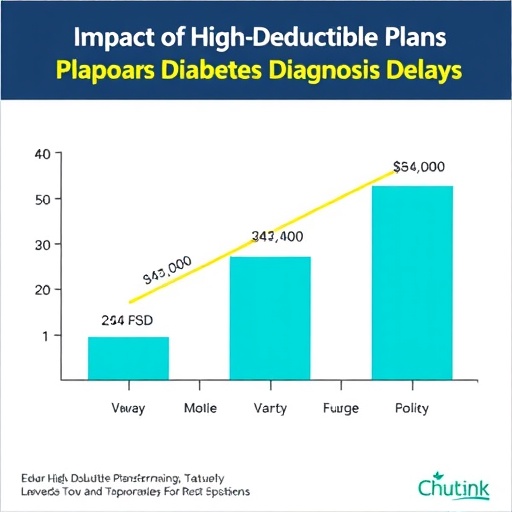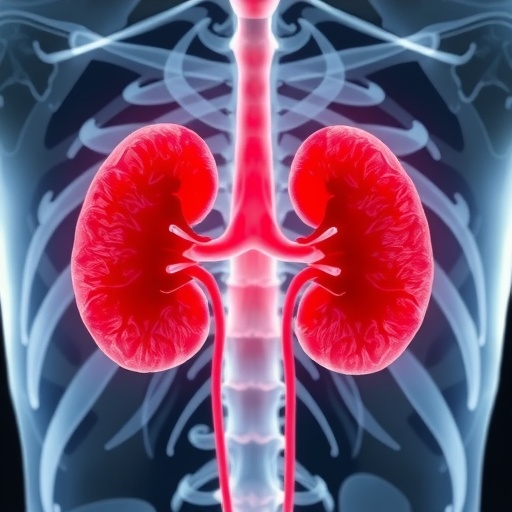
In the evolving landscape of oncology, the management of advanced non-small cell lung cancer (NSCLC) presents unique challenges and opportunities for improvement. A recent study by Shah et al. illuminates the complex interplay between patient and physician preferences concerning maintenance treatment options for individuals battling this notoriously aggressive form of cancer. The insights gained from this research not only shed light on treatment selection processes but also underscore the necessity for personalized medical choices that resonate with the values and expectations of patients.
Advanced NSCLC is characterized by a variety of genetic mutations and environmental factors that contribute to its progression, making it a leading cause of cancer-related morbidity and mortality worldwide. As therapeutic strategies have advanced, the focus has shifted from merely extending survival to improving the quality of life. Maintenance treatment, which seeks to prolong the efficacy of first-line therapies while mitigating side effects, has surfaced as an integral component of managing advanced stages of this disease. However, aligning treatment paths with patient preferences remains a critical aspect that requires further investigation.
Shah and colleagues conducted a comprehensive analysis to explore the preferences of both patients and oncologists regarding maintenance therapies. They employed a mixed-methods approach combining qualitative interviews with quantitative surveys to ensure a robust understanding of multiple viewpoints. The findings revealed a disparate landscape where patients often value aspects such as tolerability and the potential impacts on their daily lives, while physicians may prioritize clinical endpoints such as progression-free survival and overall survival rates.
This divergence is particularly significant, considering that patients living with NSCLC frequently bear the burden of the disease’s symptoms, as well as the side effects from ongoing treatments. The patients surveyed expressed a strong preference for therapies that yield manageable side effects, underscoring a desire for a treatment experience that allows for a reasonable quality of life. In contrast, many oncologists cited the crucial role of empirical data in guiding treatment decisions, and thus tended to lean towards therapies with robust clinical evidence even if they posed more significant side effects for the patient.
The study highlighted that while clinical evidence is essential, it is equally important to integrate patient perspectives to refine treatment protocols. It emphasized a growing need for shared decision-making processes in oncology, which can empower patients and enable them to take a more active role in their treatment journey. By fostering meaningful conversations, healthcare providers can better understand what each patient values most and tailor recommendations accordingly.
Moreover, a profound implication of Shah et al.’s findings is the potential for enhanced patient adherence to treatment plans. When patients feel their preferences and experiences are respected and reflected in their therapy, they are more likely to stay committed to their treatment regimens. This adherence is paramount in the context of advanced NSCLC, where treatment success hinges not just on the efficacy of a drug, but on the patient’s ongoing participation in their own care.
As the landscape of lung cancer therapy becomes increasingly complex with the advent of new targeted therapies and immunotherapies, the necessity for ongoing education among healthcare providers is paramount. In addition, the study suggests that healthcare systems must establish clear frameworks for incorporating patient preferences consistently across all treatment landscapes. This approach will help in forging stronger patient-physician alliances that can lead to improved health outcomes.
This recent research also affirms the role of patient advocacy groups in bridging the communication gap between patients and physicians. These organizations can play a crucial role in disseminating information about available treatment options and side effects while encouraging dialogue that emphasizes the patient’s voice within the healthcare conversation. The empowerment of patients to express their needs and desires can ultimately drive more personalized care solutions.
In the era of precision medicine, the implications of understanding patient and physician preferences extend beyond NSCLC and can be applied to a multitude of cancer types. Bolstering treatment plans through the lens of shared preferences can transform the patient experience and align treatment modalities with individual life circumstances, psychological states, and personal goals. Such an integrative approach could redefine standards of care for patients facing cancer diagnoses.
As researchers continue to delve into the complexities of patient-physician dynamics in treatment preferences, future studies could also examine the role of socio-economic factors in shaping these preferences. Understanding how demographics impact decision-making could allow for more inclusive research that captures a broader range of experiences and outcomes.
In conclusion, the findings from Shah et al. underscore an imperative shift in the how care is administered in advanced NSCLC. The clear disconnect between patient preferences and physician priorities calls for a reevaluation of how maintenance treatments are perceived and implemented in practice. A symbiotic relationship, where both patient insights and scientific evidence play vital roles in shaping treatment pathways, could lead to a paradigm shift in oncological care. As researchers and clinicians embolden their commitment to understanding this dynamic, the future of lung cancer treatment may indeed pivot towards a more holistic, patient-centered approach.
Subject of Research: Patient and Physician Preferences for Maintenance Treatment in Advanced Non-Small Cell Lung Cancer
Article Title: Patient and Physician Preferences for Maintenance Treatment in Advanced Non-Small Cell Lung Cancer: Insights into Treatment Selection
Article References:
Shah, M.V., Solem, C.T., Liao, A. et al. Patient and Physician Preferences for Maintenance Treatment in Advanced Non-Small Cell Lung Cancer: Insights into Treatment Selection. Adv Ther (2025). https://doi.org/10.1007/s12325-025-03347-9
Image Credits: AI Generated
DOI:
Keywords: advanced non-small cell lung cancer, maintenance treatment, patient preferences, physician preferences, personalized medicine, shared decision-making, quality of life, treatment adherence.
Tags: advanced non-small cell lung cancer treatmentchallenges in advanced lung cancer managementcomprehensive analysis of cancer preferencesevolving strategies in cancer treatmentgenetic mutations in NSCLCindividualized cancer treatment approachesmaintenance therapy for lung canceroncologist insights on lung cancer therapypatient physician preferences in cancer carepatient-centered treatment decisionspersonalized medicine in oncologyquality of life in cancer treatment




